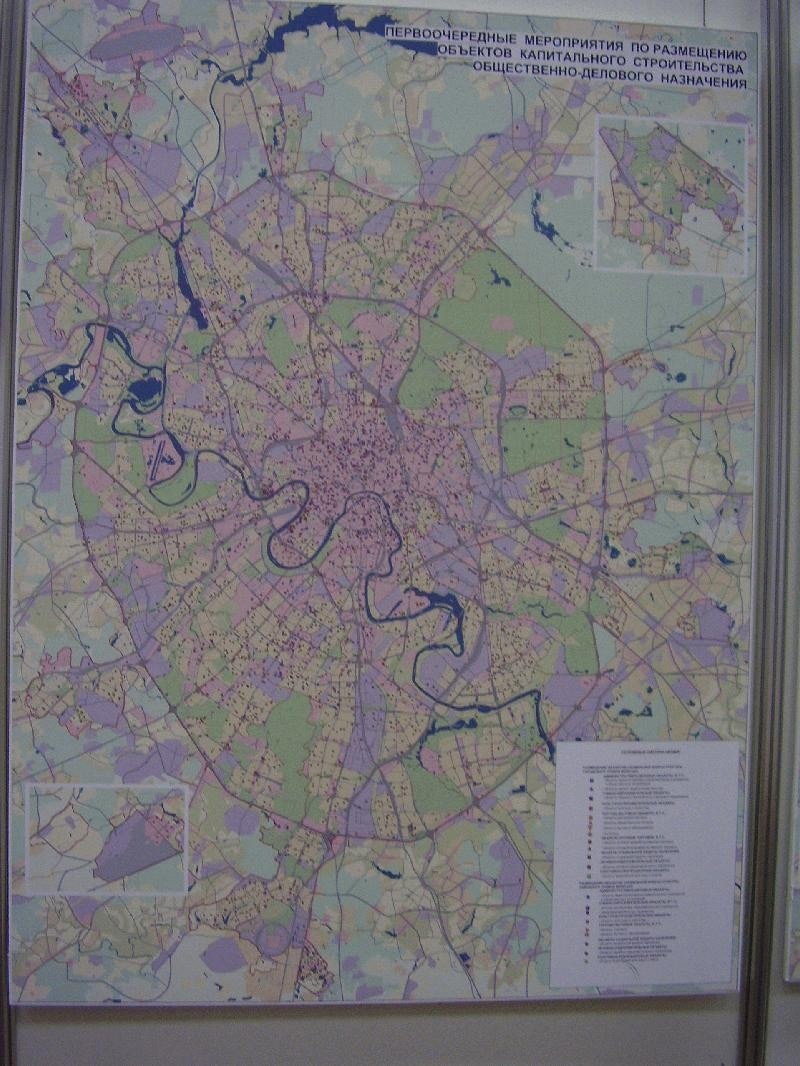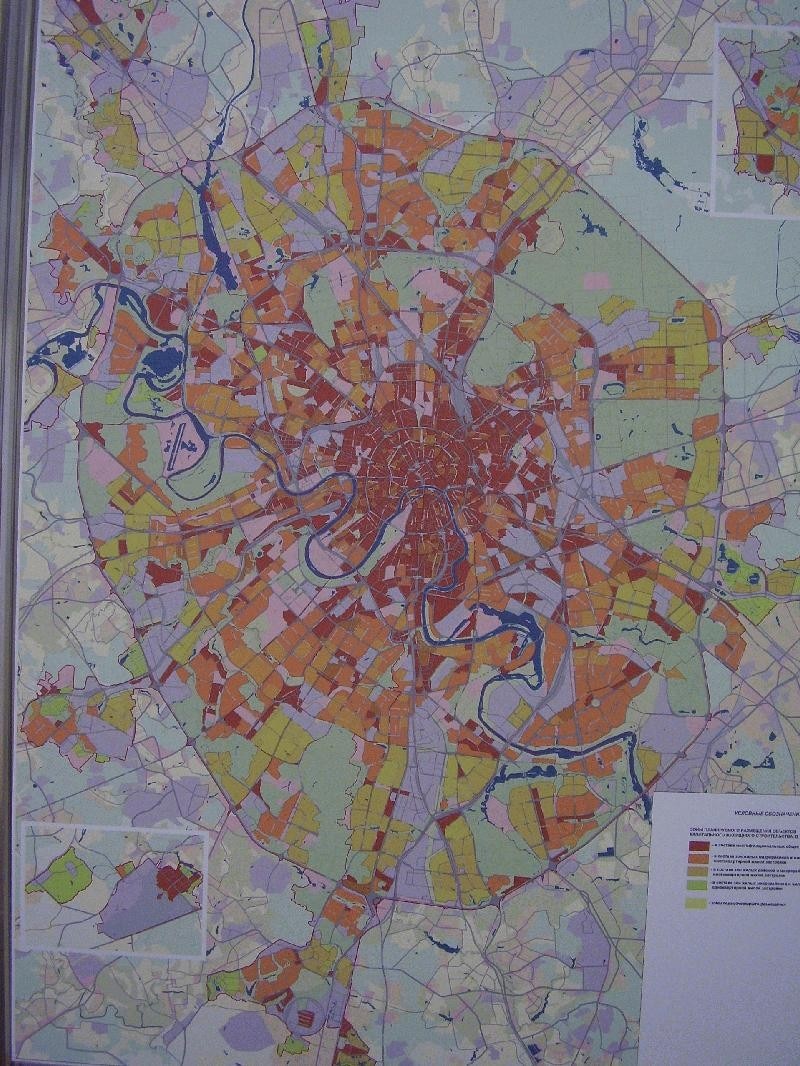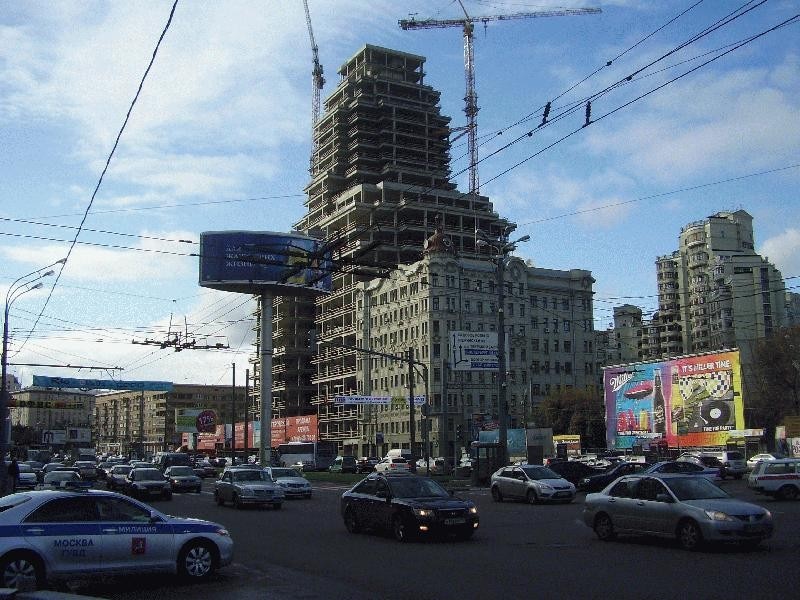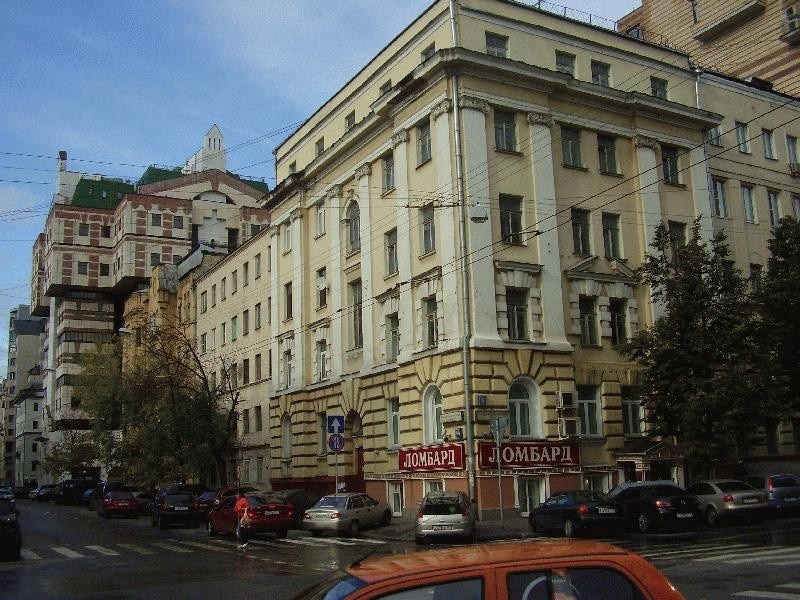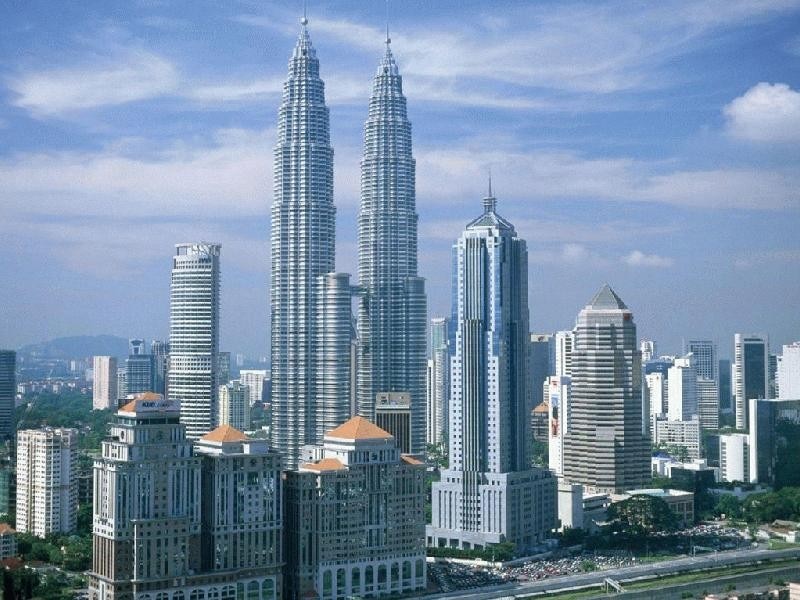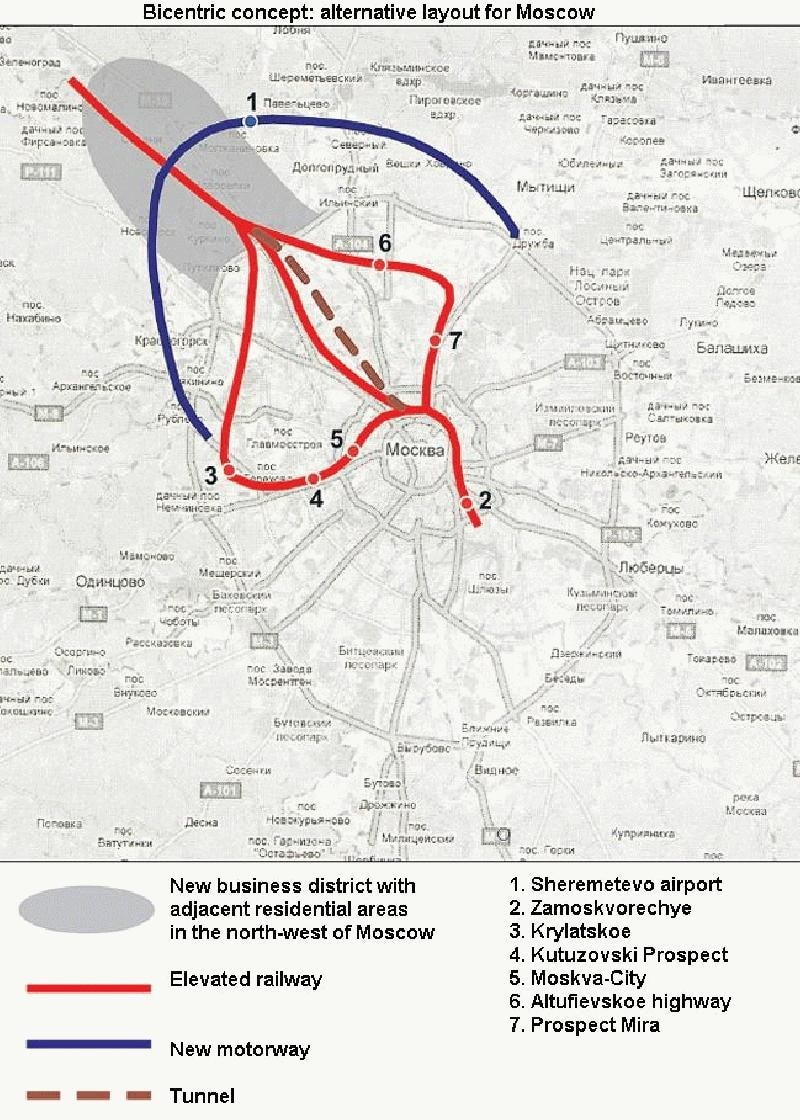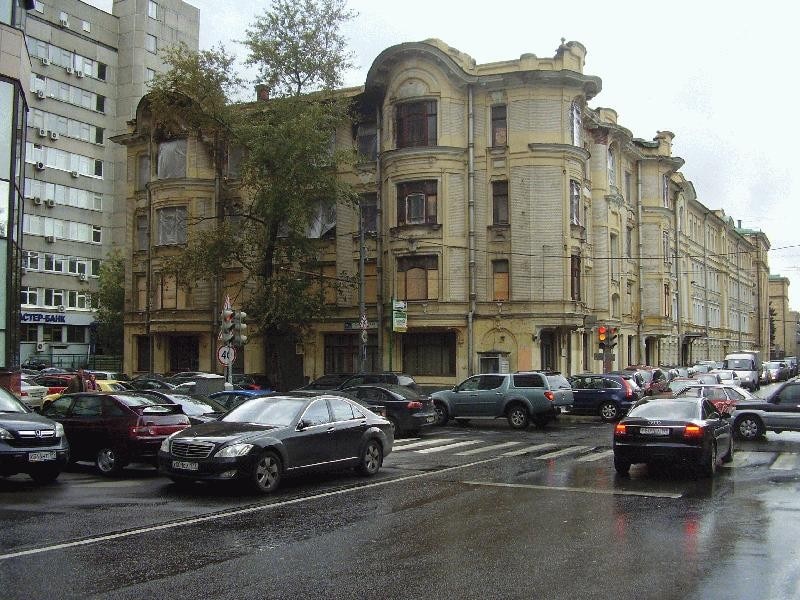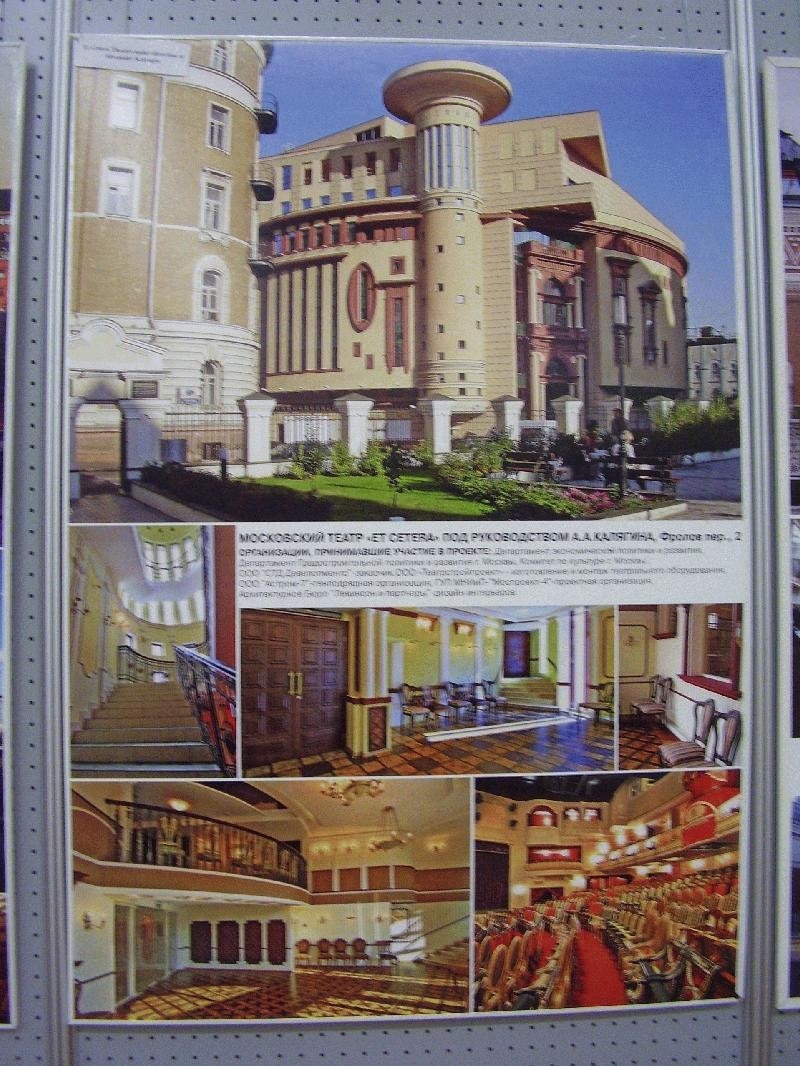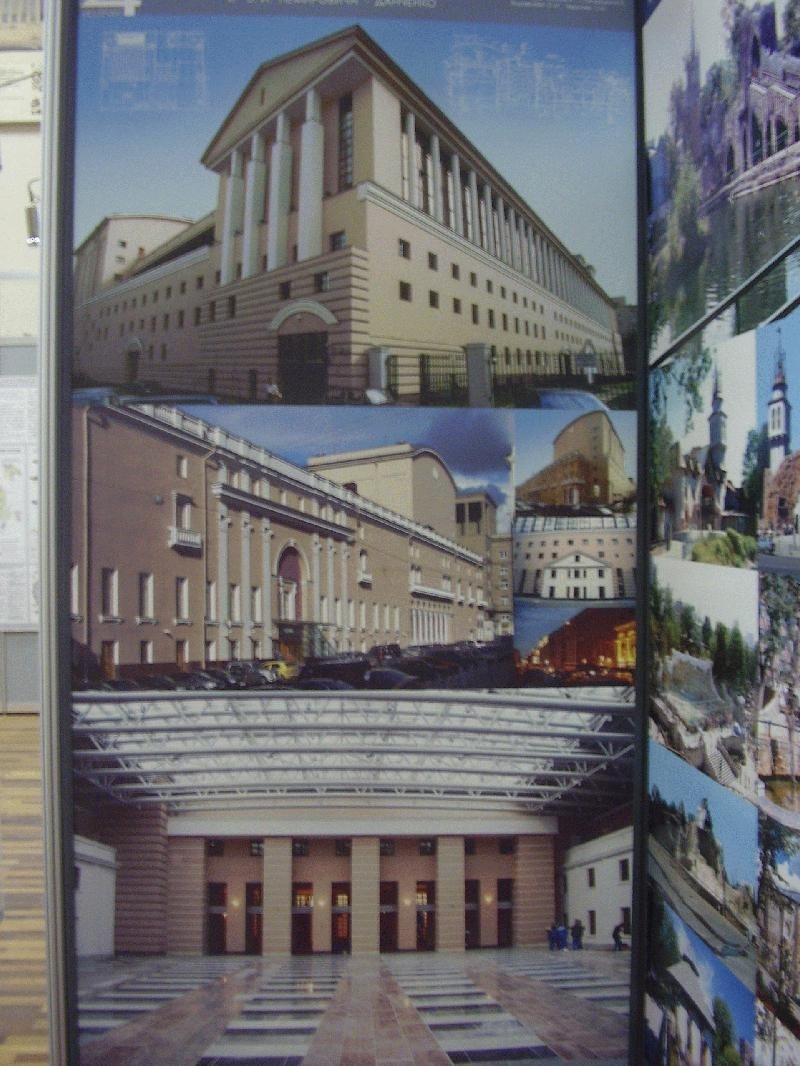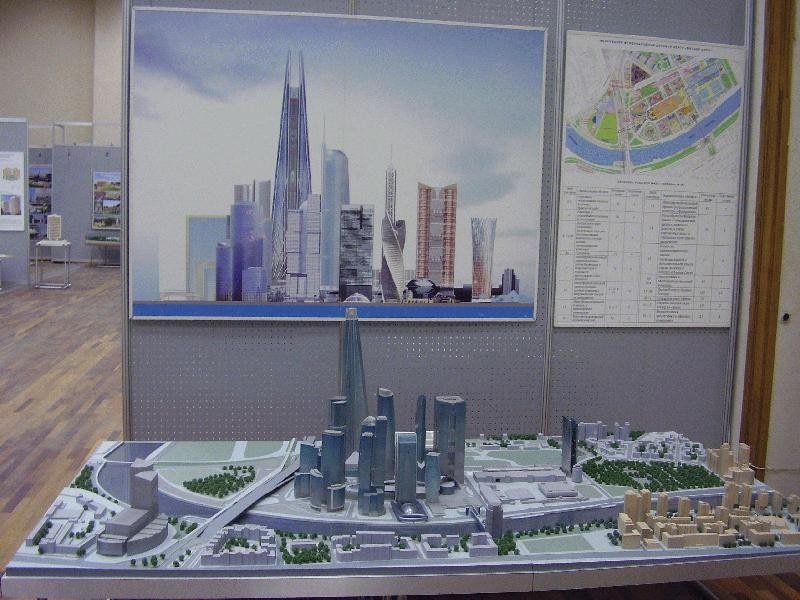Transition from the concentric-radial to a polycentric model should have been started in advance, before the proportion between the city dimensions and capacities of transport communications has come close to decompensation. In the 1990s there was a possibility to develop a business district in the south-west (near the metro station Yugo-Zapadnaya) with its expansion further to the periphery. Today, a more radical solution is required: a new commercial nucleus should be constructed along the Leningradskoe highway between the suburb towns of Khimki and Zelenograd (fig. 7): nearness of the Sheremetevo airport would be favorable for international business; in immediate proximity will be high-quality residential areas (and the territories suitable for their further construction) in the west and north of the capital. Along with the growth of the new business district, the general structure of Moscow will change from concentric-radial to bicentric, consisting of two uneven semicircles connected by tangents (a pear-like form). The new business district can be connected with the city center and some of the residential areas by a light elevated railway (like the monorail in Kuala-Lumpur), combining its stations with those of the metro. On the first stage, three monorail lines could branch off from the new business district in the direction of Zamoskvorechye (bending round the Garden Ring), to the Moskva-City via Krylatskoe, and to the Prospekt Mira. All three lines could be brought together at the Sukharevskaya (former Kolkhoznaya) Square, where a part of the public garden can be offered up for the station. Experience of Kuala Lumpur shows that the monorail is popular in spite of a relatively high fare because of low noise, fresh air and magnificent views from the height. Comfort and rapidity of the new public transport will hopefully distract a part of office personnel from daily use of cars. At the same time, the metro line should be continued in the direction of Zelenograd. As for motor transport, a highway in the form of an arch, parallel to the north-western segment of the Moscow circular motorway, should be constructed through the new business district via the Sheremetevo airport. Construction of a long distance tunnel duplicating the overloaded Leningradskoe highway should be considered as well (fig. 7). All the above would help solving the transport problems and in a long run will be cost-effective for the state budget because prices for land and immobile property would reach a maximum not only in the historic old city but also in the newly constructed business district. The venture will be costly, but it would be more reasonable to invest the funds, which are currently at disposal because of high prices for energy carriers, into useful large-scale projects rather than into reconstruction of the old city of Moscow.
More details in Russian: http://www.asm.rusk.ru/09/asm3/asm3_8.htm
All images: 2009
Fig. 1. The new business district Moskva-City: presently under construction (from the Moscow town planning exhibition).
Fig. 2. Moscow General Layout for the period until 2025 (from the Moscow town planning exhibition). Commercial and administrative offices planned to be established: their concentration in the city center is visible.
Fig. 3. Apartment house building planned for the central area.
Fig. 4-5. New edifices in the central area.
Fig. 6. Kuala Lumpur: the skyline resembling Moskva-City (fig. 5)
Fig. 7. Bicentric concept: an alternative layout for Moscow.
Fig. 8. A remnant of the Muscovite Art Nouveau waiting for its destiny.
Fig. 9-10. New buildings planned for the city center (from the Moscow town planning exhibition).
